By Mia Taylor
Note from the author:
This blog was developed to focus on travel, and more specifically ecotourism that helps the planet in some way and sustainable travel tips. But occasionally I come across a topic tied to sustainability, global warming or other environmental issues that does not specifically involve travel, which I still feel compelled to write about. World Oceans Day, in conjunction with the ongoing devastation to the coral reefs around the planet, is one such example. To mark this important day, I reached out to leading organizations and thinkers to discuss the current state of two of the Earth’s most famous coral reefs.
Late last year, Outside Magazine, an award-winning periodical focused on inspiring people to be more active in the great outdoors, published an obituary that immediately went viral.
The somewhat tongue in cheek death notice focused on the Great Barrier Reef and read in part:
The Great Barrier Reef of Australia passed away in 2016 after a long illness. It was 25 million years old. For most of its life, the reef was the world’s largest living structure and the only one visible from space…In total area it was larger than the United Kingdom, and it contained more biodiversity than all of Europe combined.
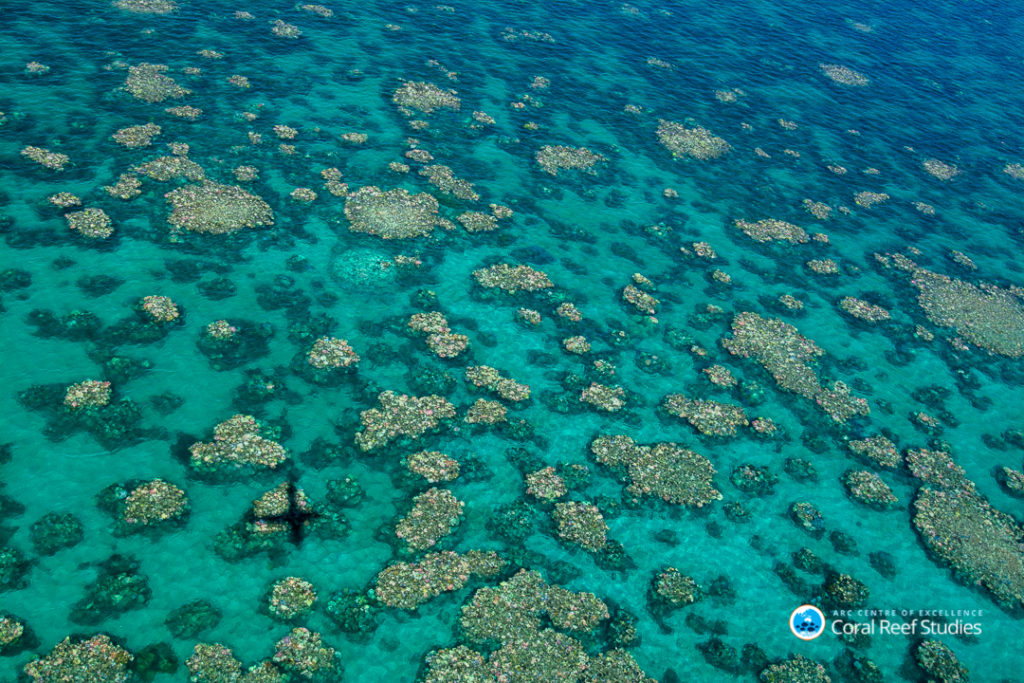
Cairns Townsville bleaching 2017. Credit: Ed Roberts.
The current state of the reefs
Though the obit was not real, it certainly served a purpose – putting the world on notice (at least those who are paying attention) that one of the planet’s most remarkable treasures may very well be gone in the not too distant future.
One week after the obit was published, word began to spread about the government in Belize green lighting offshore oil exploration near another of the planet’s most stunning reefs – the Belize Barrier Reef Reserve Systems World Heritage Site, a place UNESCO already describes as being in danger.
The outcry that followed was swift and fierce and exploration has since been suspended while the Belize government consults with stakeholders to determine whether operations should proceed.
The two headlines back to back however, were unsettling at best and begged the question – what is the current state of such important coral reefs, and what’s the outlook for the future?
Scientific community leaders and those at non-profits fighting to protect and save such important world treasures remain concerned about both of those questions on many levels, particularly because:
- Coral reefs are home to 25% of all marine life on the planet
- Roughly one-quarter of coral reefs worldwide are already considered damaged beyond repair, with another two-thirds under serious threat, according to the World Wildlife Fund (WWF).
The oil exploration plans in Belize had involved using air guns to blast shockwaves through the water, which would be powerful enough to penetrate the seafloor. The work would take place less than one mile from the reef, and has the potential to send shockwaves thousands of miles, causing irreparable damage to marine wildlife such as whales, dolphins, and manatees.
Though the process has paused for the time being, serious fears about the reef’s future remain.
“We are still nervous and we are still interested in the world continuing to raise concerns,” says WWF campaign manager Chris Gee. “The exploration for oil is obviously going down a path we think is unwise, particularly when the economy of Belize relies so heavily on people coming to see this reef.”
The role of the Belize Barrier Reef
For those not familiar with the Belize Barrier Reef Reserve Systems World Heritage Site, it’s a spectacular place that’s part of the longest barrier reef in the Western hemisphere. It includes a variety of ecosystems such as mangrove forests and sand cays, and is the location of the famous Blue Hole Natural Monument – a sinkhole surrounded by coral reef.
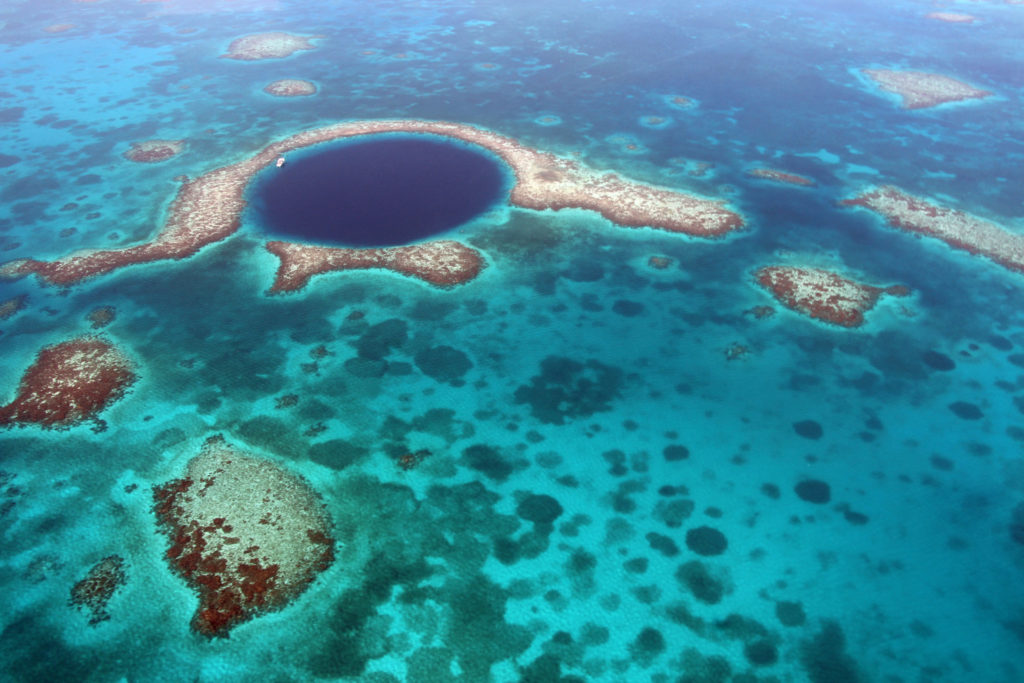
Belize Barrier Reef
The reef’s diverse ecosystem is home to at least 1400 species of flora and fauna and at least 17 threatened species. Those numbers include:
- More than 400 species of plants
- 250 species of mollusk
- 100 species of coral
In addition, the reef supports the world’s largest population of the vulnerable West Indian manatees, as well as endangered hawksbill, loggerhead and green marine turtles.
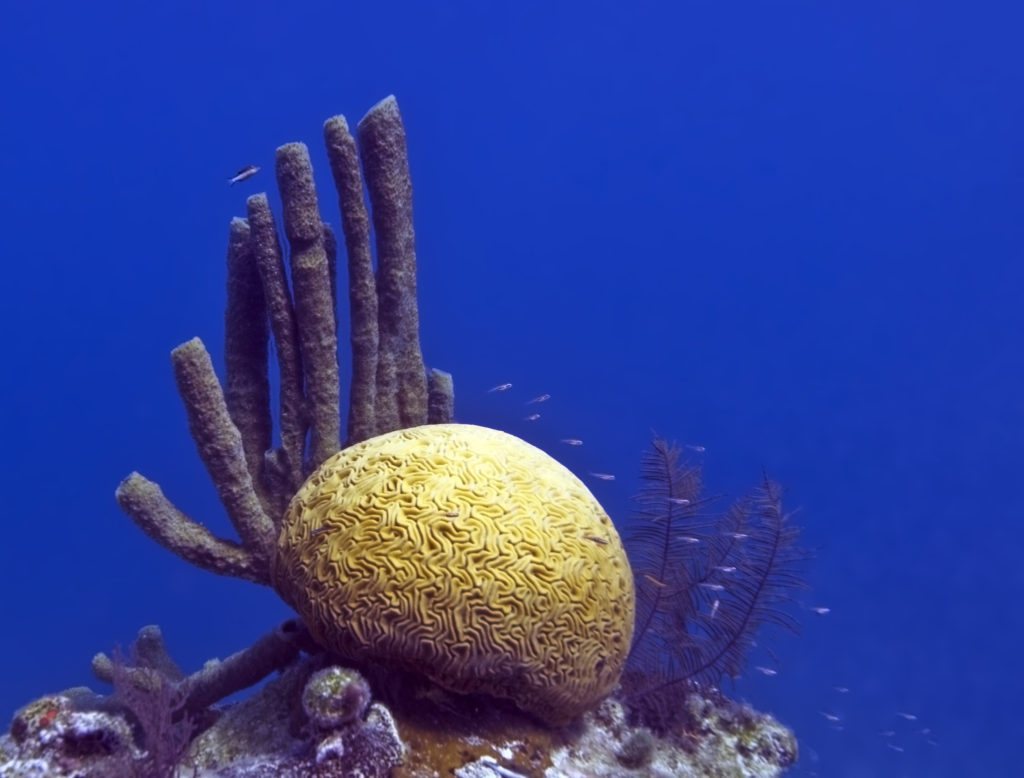
Corals of the Great Blue Hole Belize
It is for all of these reasons and more that the reef is also vital to the economy of Belize. About half of all people in the country rely on the reef for their livelihood in some way, Gee points out, whether that be tourism or fishing.
- More than 50% of Belize’s population, or 190,000 people, are supported by income generated through tourism or fisheries.
- And Belize’s reef-related tourism sector supports 28,800 jobs, according to WWF.
“The reef has increasingly become a part of Belize’s economy,” Gee continues.
When adding the Belize Barrier Reef to the World Heritage List in 1996, UNESCO recognized it as one of the most pristine reef ecosystems in the Western hemisphere. However, by 2009, it had been placed on a list of World Heritage sites in danger.
There are many reasons why the reef made it onto the danger list and has continued to remain there. Some of the initial damage involved destruction of its ecosystems by resort and housing construction, which often included large-scale clearing of mangroves. Additional threats preventing the site from being removed from the list include land conversion, and oil concessions designated within the area.
Since 1998, scientists estimate that 40% of the reef has been damaged by overfishing, agricultural run-off and unsustainable coastal construction.
But all is not lost, according to Gee.
“We have seen some positive signs,” Gee points out. “One year ago there was no protection for drilling on the reef itself. The government has since moved even further after public pressure, and said it will have a one kilometer buffer zone. UNESCO however, has said that’s not good enough, that the government needs to develop a buffer zone based on actual science.”
There has yet to be any progress by the Belize government on UNESCO’s request, according to WWF. The issue remains outstanding and requires the action and attention of the Belizean government.
The Challenges Facing the Great Barrier Reef
On the other side of the planet, the Great Barrier Reef faces countless struggles of its own.
It continues to suffer mass bleaching events (brought on by warming water temperatures) that effect even more and more of the massive reef.
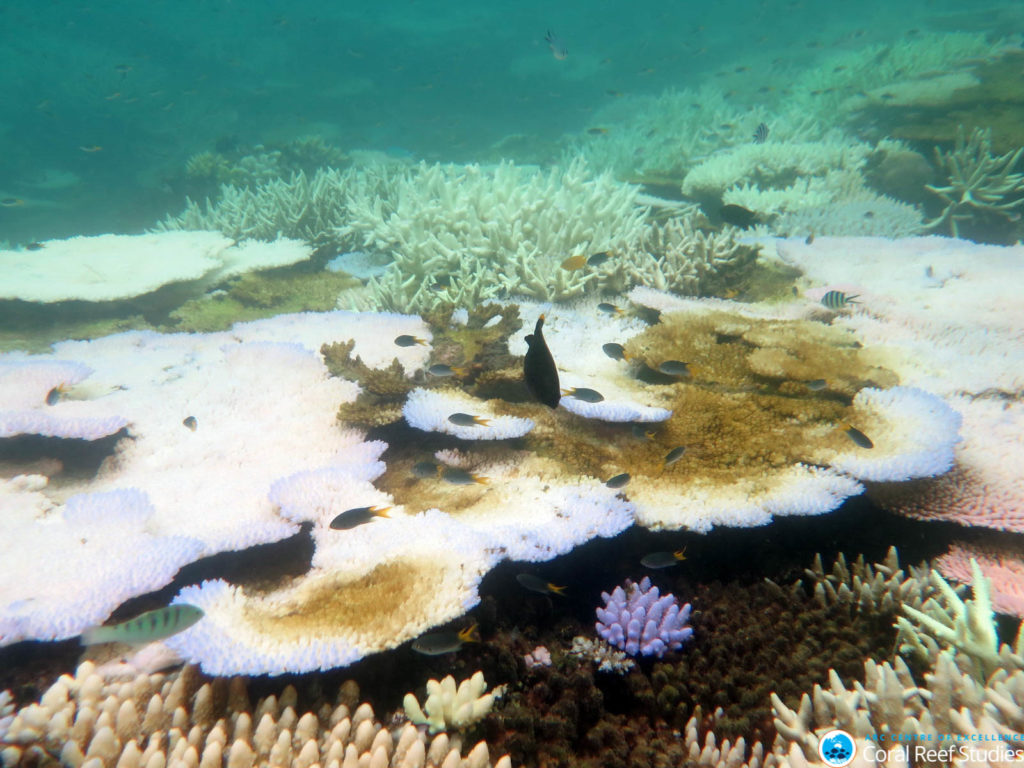
Mission Beach Reefs NE Ellison. Credit: Bette Willis.
- The 2016 bleaching caused by warmer water killed around 67% of the northern section of the reef, an area that was previously the most pristine and had escaped two earlier bleaching events (in 1998 and 2002) with relatively minor damage.
- In addition, about 26% of the far north section was killed by the 2016 bleaching event and about 6% of the central section of the reef was killed.
All of these figures were released in a report from ARC Center of Excellent for Coral Reef Studies, which described the 2016 coral die-off as the worst ever recorded to date.
Scientists expect that the northern region will take between 10 to 15 years to regain the lost corals. But they’re concerned that additional bleaching events in the interim could disrupt recovery.
And now, similar to the reef in Belize, UNESCO is considering putting the Great Barrier Reef on its in-danger list.
The Future of Coral Reefs
“There’s a lot of concern about whether coral will be able to survive continued ocean warming,” says Rusty Brainard, chief of the National Oceanic and Atmospheric Administration’s (NOAA) Coral Reef Ecosystem Program at the Pacific Islands Fisheries Sciences Center. “And all of the projections are for continued warming and maybe accelerated warming until we get a handle on our C02 emissions.”
If coral is not able to adapt, it could very well be gone before the end of the century, or well before that in some places, Brainard warns.
But some corals are heartier then others and have the ability to adapt to warming temperatures. The key however to allowing as much of the coral as possible to survive is slowing down the planet’s annual warming.
“The scientific community is concerned that we’re increasing ocean temperatures faster then corals have ever had to adapt to before and we don’t know if they can keep up,” Brainard says. “There is a rough consensus of scientists who think there will be a lot more coral mortality in the years and decades to come. There will be local extinction of many species of coral. We don’t know if we’re talking 2030, 2050 or 2100, but the longer we can prolong the warming, the more time it buys those corals to adapt.”
In addition to buying coral reefs around the planet time to adapt, what’s also needed is leaders around the world who believes global warming is a serious concern and one that needs to be tackled without further delay. Such leadership had finally begun to take off, according to Brainard, in the form of 193 countries signing on to the Paris Agreement regarding global warming.
Donald Trump’s presidential victory however, is seen by many as very bad news for that agreement and for the state of the climate.
Some were holding out hope that Trump might come to his senses and see the economic benefits of climate action, but the president’s recent decision to withdraw the United States from the Paris Climate Agreement has all but eliminated any remaining optimism.
“The rest of the world is going to continue and leave the U.S embarrassingly behind,” says Brainard. “The U.S. had often been leading the charge. President Obama raised the bar when he reached out very actively to China and India, two of the biggest emitters, to engage them in helping to turn this around. This is the biggest issue facing our planet. The Department of Defense has treated climate change as the largest risk to national security. It’s a huge issue and we’re turning our back on that and trying to discourage that science.”
What Action Can You Take?
When it comes to the reef in Belize, the WWF is asking people to sign a letter it drafted, calling on Belize Prime Minister Dean Barrow to protect the World Heritage site and make its protection part of his legacy. Once you sign, the letter is forwarded directly to Barrow. (You can sign the letter here.)
The organization’s initial hope was to gather 190,000 signatures, which would be equivalent to the number of people whose livelihoods stand to be affected by any further damage to the reef. To date, more than 400,000 people have signed, (that’s more than the entire population of Belize), making the importance of this issue abundantly clear.
“The goal of the petition is to show him how much people in Belize and around the world care about this,” Gee says.
Gee also suggests people contact the Belize embassy in their home country, and let officials know that the reef is an important place that should be protected.
And ultimately, when it comes to the future of both reefs, it will take the will and the concerted of effort of many people around the world, to secure their future.
“I think we can turn this around,” says Gee “There is time to turn this around. But no one group or individual will be able to do it on their own.”
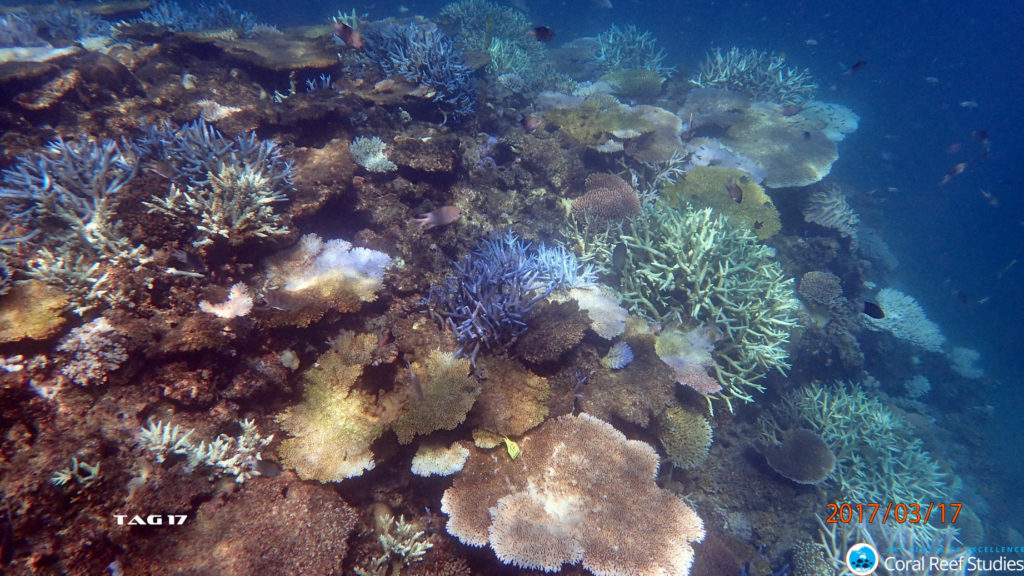
Bleached Coral Beaver Reef. Credit: Kerryn Bell
Editorial Update:
In April 2017, after this story was written, ARC Centre of Excellence for Coral Reef Studies, the premier organization studying coral reefs, announced that for the second time in just 12 months, scientists have recorded severe coral bleaching across huge tracts of the Great Barrier Reef after completing aerial surveys along its entire length. In 2016, bleaching was most severe in the northern third of the Reef, while one year on, the middle third has experienced the most intense coral bleaching.
“The combined impact of this back-to-back bleaching stretches for 1,500 km (900 miles), leaving only the southern third unscathed,” says Prof. Terry Hughes, Director of the ARC Centre of Excellence for Coral Reef Studies, who undertook the aerial surveys in both 2016 and 2017. “The bleaching is caused by record-breaking temperatures driven by global warming. This year, 2017, we are seeing mass bleaching, even without the assistance of El Niño conditions.”

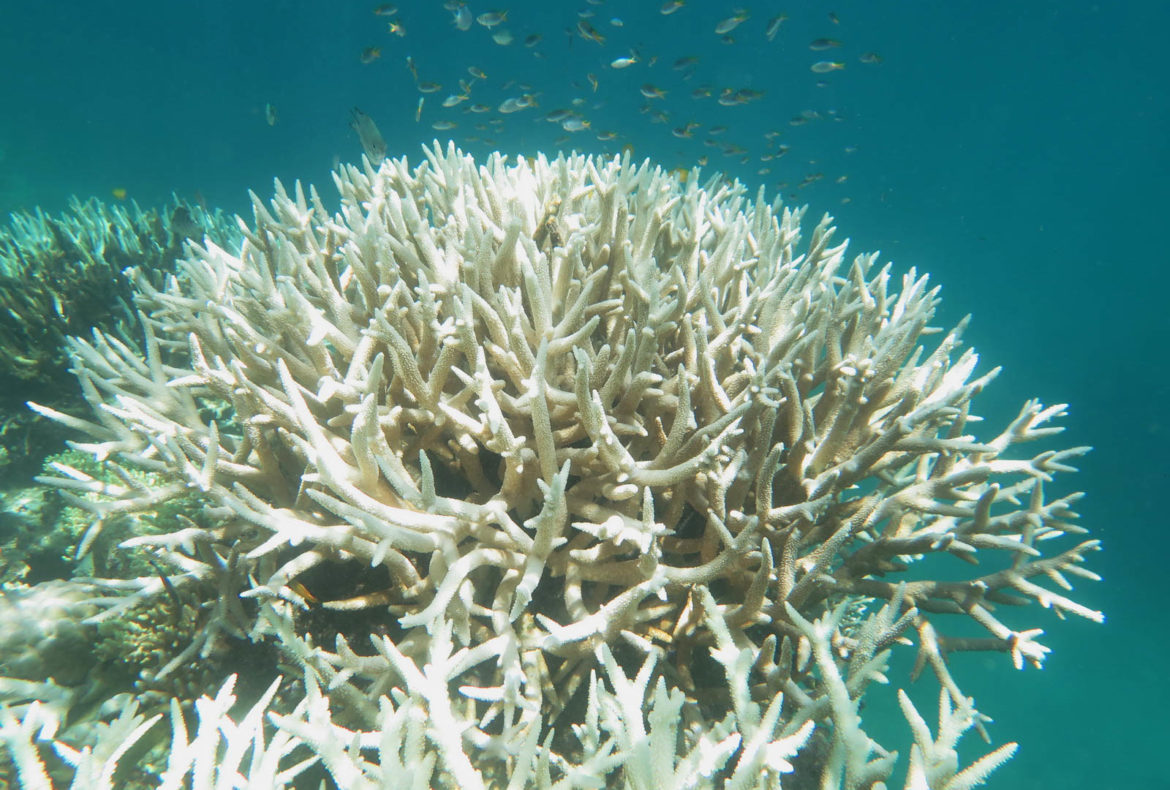
Wonderful article. So sad that our government refused to deal with climate change. What good are jobs and money from big oil and coal going to be when we destroy Mother Earth?
Thanks for your comment Kathleen – I agree, it is very sad that our government is not acknowledging climate change. What’s more, there is more money and more jobs to be had by pursuing a clean energy agenda, that has been proven time and again. Maybe together, those of us paying attention, can help protect our future! Thanks for reading the post!